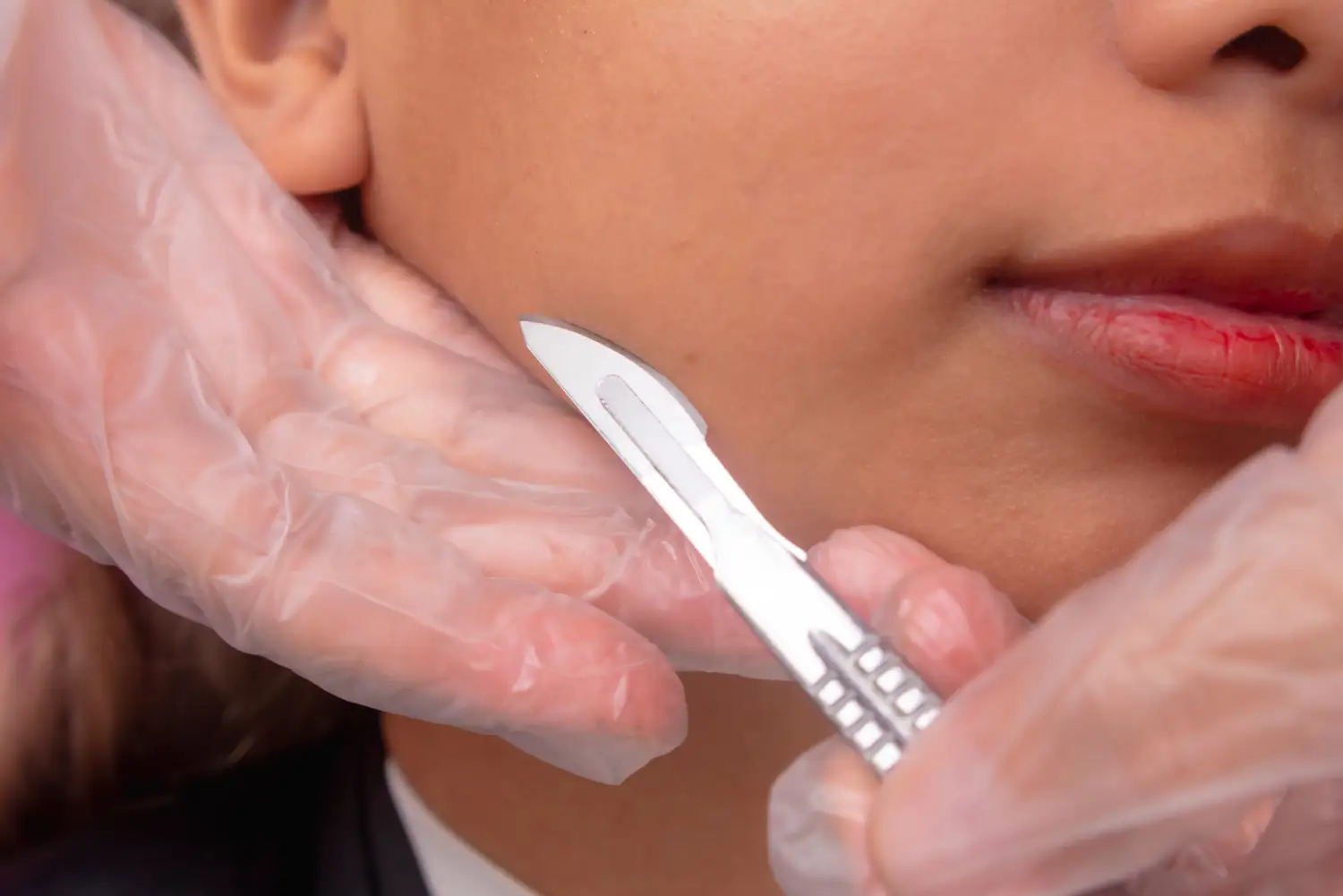
Dermaplaning
Reveal Smoother Skin with Dermaplaning
Removes surface layers of the skin and reveal a softer, more radiant complexion. If you’re looking for a way to boost your glow, dermaplaning is a safe, effective choice for all skin types.
What is Dermaplaning?
Dermaplaning is a non-invasive cosmetic procedure that uses a dermaplaning blade or scalpel to gently exfoliate the skin’s surface. This treatment removes dead skin cells and fine facial hair (peach fuzz) while promoting smoother, healthier skin. Unlike dermabrasion, a more invasive surgical procedure which involves a high-speed rotating brush, dermaplaning provides a gentler and more precise exfoliation, making it ideal for sensitive skin or minor imperfections.
Key Features of Dermaplaning
- Treats deep acne scars and uneven skin texture.
- Enhances product absorption for improved skincare benefits.
- Delivers immediate results with minimal downtime.
Whether you’re seeking rejuvenation or preparation for special events, dermaplaning is tailored to meet your skin’s needs.
Why Choose Dermaplaning?
Expert Care:
Performed by skilled dermatologists using state-of-the-art technology.
Targeted Treatment:
Effectively exfoliates the surface layers of the skin, removes vellus hair, and improves smoothness of skin texture and tone over time.
Safe and Non-Invasive:
Suitable for small areas or the entire face, with minimal downtime.
Benefits of Dermaplaning
01
Improves Skin Texture:
Reduces the appearance of scars and imperfections.
02
Removes Fine Facial Hair:
Achieve a smoother, more polished look.
03
Enhances Product Absorption:
Allows skincare products to penetrate deeper for better results.
04
Quick Recovery:
Minimal downtime makes it convenient for busy schedules.
What to Expect During Your Dermaplaning Treatment
Personalized Consultation:
Our experts assess your skin type and concerns.
Precise Exfoliation:
A dermaplaning blade is used to gently skim off surface skin layers and peach fuzz.
Post-Treatment Guidance:
Detailed aftercare instructions to ensure optimal healing and results.
Most sessions take between 30 minutes and an hour, depending on the treatment area.
Skin Concerns Addressed with Dermaplaning
Fine Facial Hair:
Remove peach fuzz for a flawless finish.
Dull Skin:
Restore radiance and a healthy glow.
Uneven Texture:
Refine the skin for a more consistent feel.
Achieve Your Smoothest Skin Yet
Discover the benefits of professional dermaplaning at Grosse Pointe Dermatology. Our expert team delivers tailored treatments to reveal smoother, brighter skin with every session. Take the first step toward a glowing complexion today.
1. How often should you do dermaplaning sessions?
For optimal results, we recommend scheduling dermaplaning sessions every 4–6 weeks, depending on your skin type and goals.
2. What are the side effects of dermaplaning?
Some possible side effects include:
- Temporary redness or swelling.
- Mild tingling or sensitivity.
- Acne breakouts if acne prone.
- Potential for infection if small knicks or cuts occur and aftercare protocol is not followed.
3. What’s the difference between dermaplaning and dermabrasion?
Dermaplaning uses a dermaplaning blade for precise superficial exfoliation, while dermabrasion is a surgical procedure that employs a high-speed rotating brush to remove deeper layers of skin. Dermaplaning is gentler and better suited for sensitive skin or minor imperfections. Microdermabrasion is a mild sanding of the skin to remove superficial layers of dead skin.
4. Can dermaplaning remove facial hair?
Yes, dermaplaning effectively removes vellus hair (peach fuzz), leaving your skin silky smooth and prepped for flawless makeup application.
5. Does dermaplaning help with acne scars?
Dermaplaning is particularly helpful for reducing the appearance of shallow acne scars by smoothing out the surrounding skin over time.
6. How long does it take to recover from dermaplaning?
Dermaplaning patients typically need about 24 Hours to recover from the treatment.
7. Who shouldn’t have dermaplaning?
Before getting this procedure, talk to your doctor if you have:
- An active case of acne.
- Cold sore outbreaks.
- Eczema, Psoriasis, or other skin rashes
- Moles, freckles, skin tags or other skin growths.
8. How do I prepare for a dermaplaning session?
Arrive with clean skin. Avoid sun exposure, topical acids (salicylic/glocolic, etc.) and tretinoin (all retinol ingredients) should be discontinued 2-3 days in advance, ask provider about cold sore prophylaxis prior to treatment.
